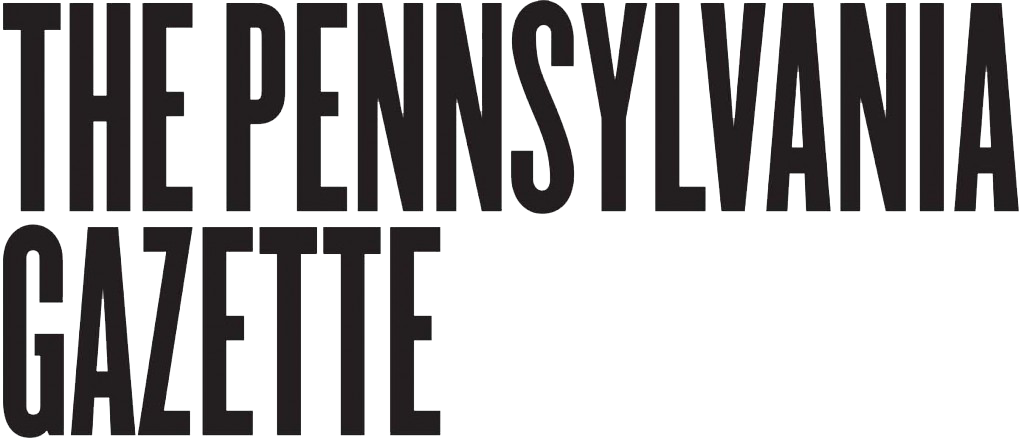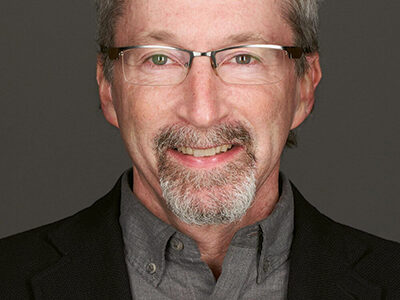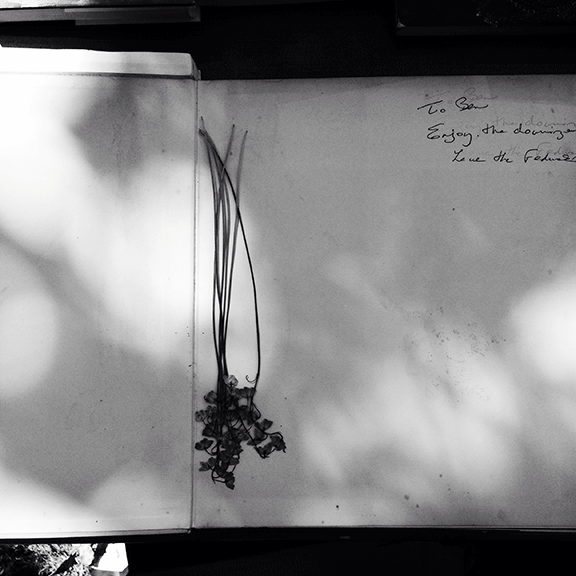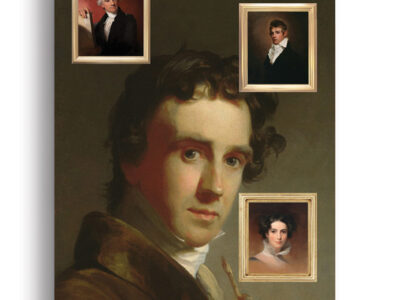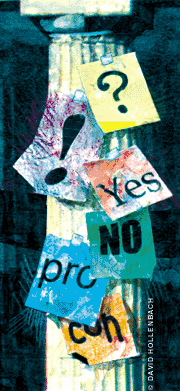
In this essay from the book, Public Discourse in America, Penn’s president lays out a vision of universities as “exemplars of a new kind of thoughtful civic engagement and robust public discourse.”
By Judith Rodin | Illustration by David Hollenbach
Sidebar | Good Arguments Make Strong Societies
On September 26, 1999, The Philadelphia Inquirer published an editorial addressing the controversy over Australian ethicist Peter Singer, newly appointed to the Princeton faculty, whose views—particularly on euthanasia—had excited protest. “What’s the point of a university?” the editorial begins. “Is it only to cram a society’s settled opinions into the minds of young adults, to prepare them to ease smoothly into the workplace once they’ve snagged a diploma? Or is it also to spur those minds to become more agile and powerful, capable of challenging and improving upon the received wisdom, able to stretch the boundaries of theory and research?”
The failure to address this fundamental question marks some of the most dangerous episodes in the modern history of American higher education. It certainly should have been asked more strongly during the era of McCarthyism and witch-hunting for communists in the 1950s—and whenever a culture of political correctness becomes a reality of intellectual coercion.
Indeed, the question of what a university is for is a perennial one. “Spurring minds to become more agile and powerful” sounds just like the business universities want to be in. And, by some measures, universities are succeeding in this endeavor. Undergraduate applications continue to skyrocket, research advances garner headlines and greater funding, college graduates have multiple career opportunities, and endowments continue to grow. But have we challenged ourselves to answer the question, “What is a university,” for the new century?
As he began a life sentence in South Africa’s Robben Island prison, Ahmed Kathrada, an apartheid political prisoner with Nelson Mandela, wrote to his family: “When Ma or anyone at home starts worrying about me, they must just imagine that I’m not in jail but at university.” This was more than hyperbole or a way to calm his parents. What is a university at its best, after all, but people learning from one another, communicating, and thinking, even if they are breaking rocks on a chain gang? Indeed, Kathrada would later become the first prisoner to earn a university degree while incarcerated at Robben Island.
Just as a prison can be a university, so too can a university be a prison, one whose bars are orthodoxy, indifference, or disengagement from the larger community. After September 11, 2001, the world is a more dangerous place than ever. The need to prepare university students for a mercurial society and an unpredictable future is greater than it ever was. I no longer believe that it is enough for universities to expand the intellect and talents of their students. It is not enough to provide a great education. That is still central and essential to our mission, but it is not sufficient. We cannot hope to cope with the complex threats and challenges we face today if we “silo” our knowledge and faculty, or our students, inside carefully constructed and vigorously defended disciplinary, institutional, and cultural walls. Our problems are too complex and there are too many other things—about the world and about themselves—that university students need to learn and that we need to learn from them.
Universities can and should be the exemplars of a new kind of thoughtful civic engagement and robust public discourse. This kind of civic engagement is neither easy nor accidental. It is strategic, comprehensive, intense, and purposeful. At its best, it weaves itself in and through every aspect of campus life, from medical research and particle physics to classical studies, student volunteerism, and economic development. To cultivate active citizenship and civic engagement, universities must pursue multiple initiatives in every aspect of their activities, from student life to the classroom to business practices and investment. Universities are in a unique position to bridge communities, cultivate leadership, and model effective public discourse.
Universities can develop academic service-learning courses that find synergy in the combination of scholarship and service. Such courses feature a direct and conscious link between the application and social value of knowledge and the academic core of the university. These are not second-rate, watered-down, “applied” field sessions. They are not academic credit for what should properly be volunteer activities. When well-conceived and well-implemented, they are high-order creations of intellectual sophistication and public spirit that teach students how to engage actively with those they may never otherwise come to know and work with. For example, here at Penn we have developed service-learning courses that bring about enduring community improvements such as effective public schools, neighborhood economic development, and vital community organizations. These academic programs find synergy in the combination of scholarship and service, in their application of theories to practice, and the stimulation of new theorizing out of practical experience. In a typical Penn program, a student performs service as part of an internship that is coordinated with scholarly research—to the mutual benefit of research and service.
This program is well illustrated by the work of Dr. Robert Giegengack, a geologist, chair of the Department of Earth and Environmental Science, and past director of the Institute for Environmental Studies. His class in Environmental Studies covers basic research in environmental toxins, and in that respect is a traditional arts and sciences course. In addition, however, members of the class help public-school students and their families, most living below the poverty line, to identify sources of lead in and around their homes. Undergraduates work with students from a nearby middle school to test soil samples from their yards, and dust and paint samples from their homes, and assist in mapping the risk of lead exposure in the neighborhood. In addition, the middle-school students work with the undergraduates to design materials that are disseminated to parents and neighbors warning them of the dangers of lead exposure and how to decrease the chances of lead ingestion by the group most at risk of its ill effects, preschool toddlers. As a short-term program of outreach and information dissemination, the program has been a dramatic success. School children are now far more knowledgeable about the problem of lead exposure in their homes and neighborhood, and middle schools now have a unit of study installed in their curriculum that focuses on the lead problem. But the educational benefits of this program to our undergraduates are also enormous. Moreover, the findings of the program have enabled us better to understand the epidemiology of lead exposure in Philadelphia and other cities, and may help other schools in Philadelphia and elsewhere adopt the program with similar success. This course and many others like it connect the university and the world outside in transformative ways that build new communities and create new forms of public engagement.
A second critical form of civic engagement is the commitment that universities, as citizens themselves, make to the quality of life in their neighboring communities. Universities shoulder extensive civic duties, and the manner in which they do so, once again, is an example to their students and to other institutions. The willing participation of universities and their neighbors in the conversations of democracy—which are rarely smooth and rarely easy—is the only way to gain the long-term benefits of mutual trust and understanding without the unrealistic expectation of perpetual agreement. Real progress requires a new mindset, asking not what should we do to the community, or even for the community, but rather what should we do with the community. What work do we have to do together, by virtue of our shared situation? The conversations that follow must be ongoing, open-ended, and constantly renewed, focused on the tasks we share; they must welcome our divergent responses to that common agenda. Sustained community partnerships will help define successful universities in the 21st century, and such partnerships will fail in the absence of a continuous civic dialogue about the urgent tasks we must undertake together.
One such initiative is the Penn Alexander School, the University-assisted pre-K-8 neighborhood school in West Philadelphia that opened in the fall of 2001, the result of a unique partnership between Penn, the Philadelphia public-school system, and the teachers union. The school features small classes and learning communities, active professional development for teachers, a cutting-edge curriculum, and other important innovations. It is not a Penn lab school. Nor is it a charter school. It is a neighborhood public school intended to bolster efforts to enhance the West Philadelphia community.
Universities can also play important community-building roles when they act in more traditional ways as clearinghouses for credible information and analysis in an age of information-overload. Universities can sort out what we know and do not know, so that people are able to make sense of all the data and convert information into knowledge. By providing clear information, in certain cases, we may help to explode negative popular myths that breed unfounded cynicism, and we help to provide good data to inform public policy debates. Universities should do more to interpret and publicize the fruits of their research to the general public; this would benefit public-policy and the common good. At Penn today, we are doing this through the formation of a new interdisciplinary Institute for Strategic Threat Analysis and Response, as we struggle to address the uncertainties and instant mythologies of the “War on Terrorism.”
The most important form of civic engagement for universities may be their own evolution as strong and lively “discourse communities,” shaped in the crucible of their members’ intense engagement with issues of personal and public moment. We can only create real, solid community by engaging—even arguing—with each other over important matters, not by ignoring or suppressing those concerns, especially when we disagree. We must form communities of serious conversation around the most compelling issues of the day—issues such as the maintenance of civil liberties in the wake of the 9/11 terrorist attacks, the continuing legal struggles over Affirmative Action, the challenges of immigration and religious tolerance in a dangerous and frightening world, and the long-unresolved domestic crises in health care, retirement security, and welfare reform.
The university is an obvious setting for robust and thoughtful discourse on such hot-button topics. By fostering these conversations, the university will offer students valid experiences of active, engaged public discourse and civic involvement that will serve as lifelong prototypes. But when discussions grow hot and ill-tempered, as they sometimes do, the university must also model how heat and anger can be handled and utilized for positive change.
Most universities have now concluded that we cannot legislate away undesirable behavior and incivility with codes, policies, and regulations. Campus speech codes and similar regulations failed to reduce levels of intolerance or incivility on campuses, and they certainly will not moderate the ideological polarizations of our politics. Such measures send fundamentally the wrong message, one that reinforces the sense of powerless individuals and monolithic institutions, of cultural orthodoxy and paternalistic authority, and of ideological conformity and political correctness.
Universities must learn to use the robust discourse permitted by our society’s fundamental commitment to the freedoms of ideas and expression to educate rather than to wound. The university administration’s job is to support, foster, and facilitate such dialogue and debate, not to cut it off; to create an environment in which we can educate each other, not one in which doctrine or orthodoxy are legislated from on high; to encourage voluntary engagement over boundaries of difference, not silence the expression of unpopular ideas through moral intimidation from a privileged bully pulpit.
University presidents, to be sure, must provide “moral leadership” on campuses. But moral leadership requires suasion not censorship, conscience not coercion, engagement not intimidation. Most of all, it requires an insistence that we—all of us—talk about what troubles us. Words are the lifeblood of a university. For all their limitations, even if they sometimes drive us apart, words are what bind us together in the academy and in our larger communities. Free and robust expression and debate are essential to an academic community. Tempting as the mantle of moral leadership may be, it is too often a comfortable excuse for imposing quietude and conformity, where raucous debate and energetic engagement should flourish. Academic leaders too often feel the temptation to quietude, but we must not fall prey to it. Students cannot retreat to their computers, their courses, and their careers. We all have to engage. Universities bear the responsibility to create a context in which actual diversity of views and opinions, persons and groups, politics and perspectives, is nurtured, valued, and shared.
Universities can raise the level of the discourse. Basic academic values that we already hold—respecting complexity, posing substantive rather than rhetorical questions when framing a discussion, welcoming real input and participation, holding open the possibility that we may be in error, and, of course, refraining from ad hominem arguments —are not only guidelines for good public discourse. They also create in modern universities a readily accessible model for workable communities. By modeling this kind of public discourse and behavior in universities, we will take an important step toward fulfillment of our leadership responsibilities. Universities are transformative places. They have the capacity to change people’s expectations of others and of themselves. If Mandela and his fellow prisoners in their university of the mind could have conceived new forms of democracy while breaking rocks, imagine what those institutions more typically thought of as universities have the potential to create.
Excerpted from Public Discourse in America: Conversation and Community in the Twenty-First Century, edited by Judith Rodin and Stephen P. Steinberg, published by the University of Pennsylvania Press. Copyright ©2004 by the University of Pennsylvania Press. Reprinted with permission of the publisher.
SIDEBAR
Good Arguments Make Strong Societies
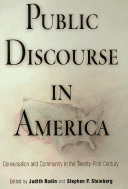
In September, the University of Pennsylvania Press published Public Discourse in America: Conversation and Community in the Twenty-First Century, coedited by Penn President Judith Rodin and Stephen Steinberg, executive director of the Penn National Commission on Society, Culture, and Community.
The volume collects essays written for six meetings of the Commission that was convened by Rodin in 1996 to create “a robust and diverse public culture in which reasoned and reasonable discourse can flourish.” At the time, “few issues loomed larger than the apparently rapid deterioration of public discourse and public behavior in the United States,” Rodin writes in a prologue.
The terrorist attacks of September 11, 2001 have rendered that era far more distant in mind that it is in years. But the problems addressed by the essays, say the coeditors, are in some ways perennial and more specifically go back to the early 20th century, as “‘thick’ interdependencies between social life and politics have given way to a ‘thinning’ of public discourse, in which politics is estranged from people’s lives, values, and social experiences.”
Those problems also seem likely to outlast the mood of national unity that immediately followed the terrorist attacks, as arguments over foreign wars and their aftermaths in Afghanistan and Iraq, and over alleged challenges to civil liberties at home—not to mention the looming presidential elections of 2004—have dissipated some of that common sense of purpose. “While seemingly more ‘civil’ and unified, America’s current domestic and international situation makes the three-year study undertaken by the Penn National Commission on Society, Culture and Community in the late 1990s far more relevant than one might first have thought,” they contend.
Nearly 50 “academic and professional leaders” participated in the meetings, held in Philadelphia, Chicago, Washington, and Los Angeles between 1996 and 1999. The essays are organized around six major areas, moving from an examination of public discourse and democracy, to the challenge of talking about race—a tragic and recurrent failure in American public life—to studies in contemporary discourse leadership, to discourses of reconciliation, to principles and practices for “thickening” public discourse, and finally to ways to create community through public discourse.
Contributors include the essayist Richard Rodriguez on the increasingly convoluted question of racial identity in America; Harvard University president emeritus Derek Bok on political leadership in the healthcare debate of 1993-94; movie and cultural critic Neal Gabler on public discourse in popular culture; Jay Rosen, a leader in the “public journalism” movement, on journalism as civic leadership; and University of Chicago president Don Randel on the “myth” of academic community. Besides the prologue, Rodin contributes an essay on “the university as discourse community” (excerpted here), and co-editor Steinberg writes on creating communities in cyberspace and an epilogue on the “centrality” of public discourse.
Throughout the course of its work, the Commission struggled against a shorthand view of its mission as one of merely getting people—politicians and the rest of us—to be more civil, nicer to each other. Rodin uses an anecdote about (who else?) Benjamin Franklin to clarify the Commission’s true goal—and, historically, the United States’ salvation in times of crisis.
In 1787, Franklin admonished the Continental Congress that they had come together “to consult, not to contend, with each other,” Rodin writes. “But we know that they did contend with each other, sometimes strongly and uncivilly, about the most fundamental conceptions of human liberty, community, and government,” she continues. “Yet the founding fathers also recognized their common situation and shared task, the pressing necessity of designing a workable government. Despite their profound and sometimes painful differences, they made their contentious discourse productive by remaining engaged, whether they won or lost the day’s argument, and by staying committed to their common endeavor.”
—J.P.
